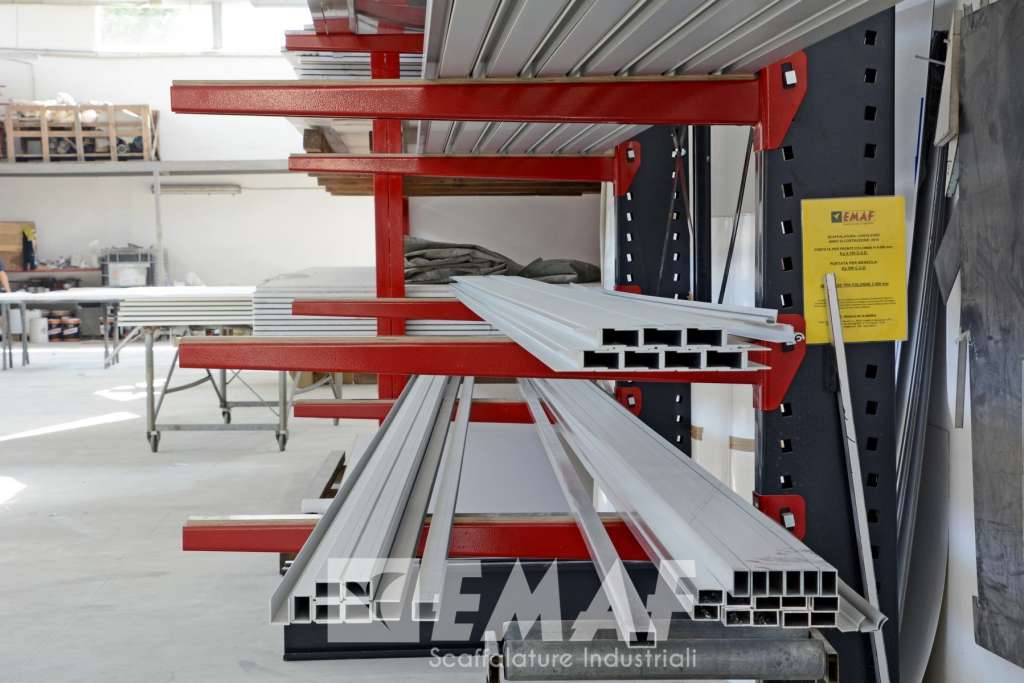What requirements are needed to design a warehouse with industrial metal shelves? In simpler words, what do we need as Emaf, shelving suppliers, to devise a project that guarantees full safety for the metal shelving for a warehouse?
First requirement: know the details of the building
The first requirement is to be aware, in particular, of the details of the building that will house the industrial shelving system: dimensions, height and positioning of the metal shelving with respect to the environment, the arrangement of the doors from which it enters and exits the flow of goods.
It is very important at this stage to establish what are the properties of the flooring used as a foundation for industrial metal shelving and for the equipment that will carry and move the goods.

Second requirement: know the type of goods and its scope
After having had an overview of the main characteristics of the warehouse, we need to know the type of goods that will be stored in the shelves and then identify the specific characteristics of each pallet, for example, and therefore the dimensions, the width, the depth and the height of each pallet.
Another important thing is to know what its capacity will be, in order to know what are the admissible loads on industrial racks.
Third requirement: arrangement and configuration of the shelves
After identifying these characteristics, it is important to study the arrangement and configuration of the shelving in such a way as to have the spaces already in the design phase: forklift passage corridors, pedestrian crossings and if we are in the presence of areas intended for partial storage or a processing of the goods, so as to carry out the deposit and the picking of the pallets on the industrial metal shelves in a safe way and with a continuous flow.
Fourth requirement: which forklifts?
Important, to define the stowage aisles, understand what type of forklifts the customer uses, so as to know both the effective width of the corridor and what the operating radii of the trucks themselves are.

Fifth requirement: do you need protections?
Another thing not to be overlooked is defining the impact resistance protections for metal shelving. Sometimes it takes little to avoid serious damage to the goods and especially to the people who work inside the warehouse.
Sixth requirement: who mounts the rack?
It must always be defined, during the sales phase, who will carry out the assembly of the equipment: whether the supplier or directly the final customer. It may seem like a detail, but it is important to establish it a priori to ensure that assembly takes place in complete safety.
Seventh and final requirement: will anything change?
The last requirement, but definitely one of the most important, is to know if the information received will be constant over time or will vary in the medium term: if for example we will have changes in the configuration of the pallets in the medium term we will already have to predict what the new loading unit would be.

